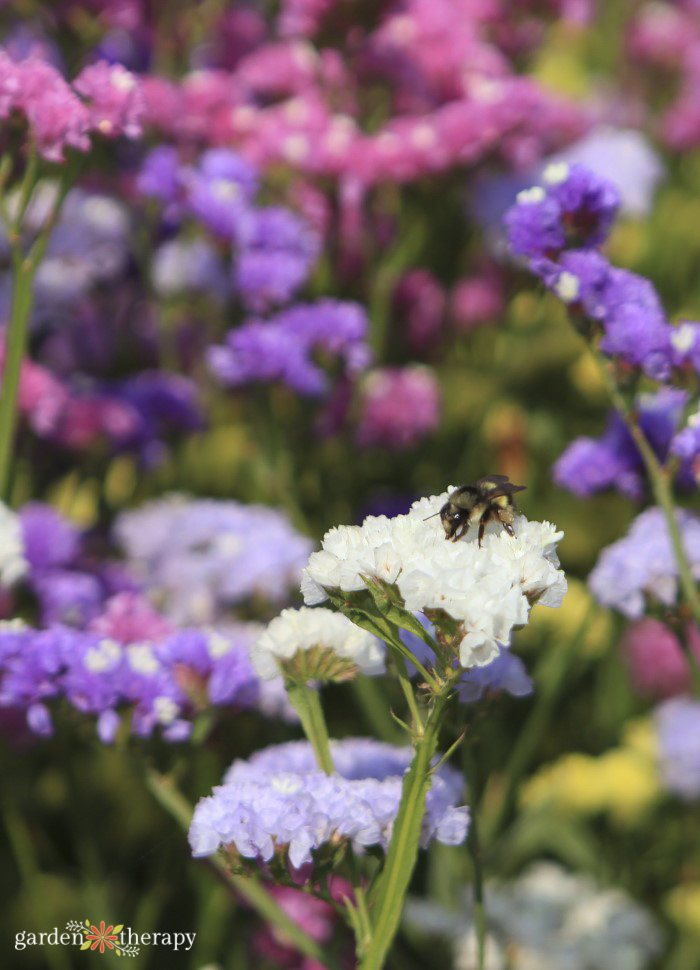Say thank you to those bumbling, fuzzy, pollen enthusiasts we love so much…bees! By planting flowers for bees, we can help them get enough food and energy to keep on pollinating our plants. Create a bee garden using these flowers, projects, and tips you can easily do at home.
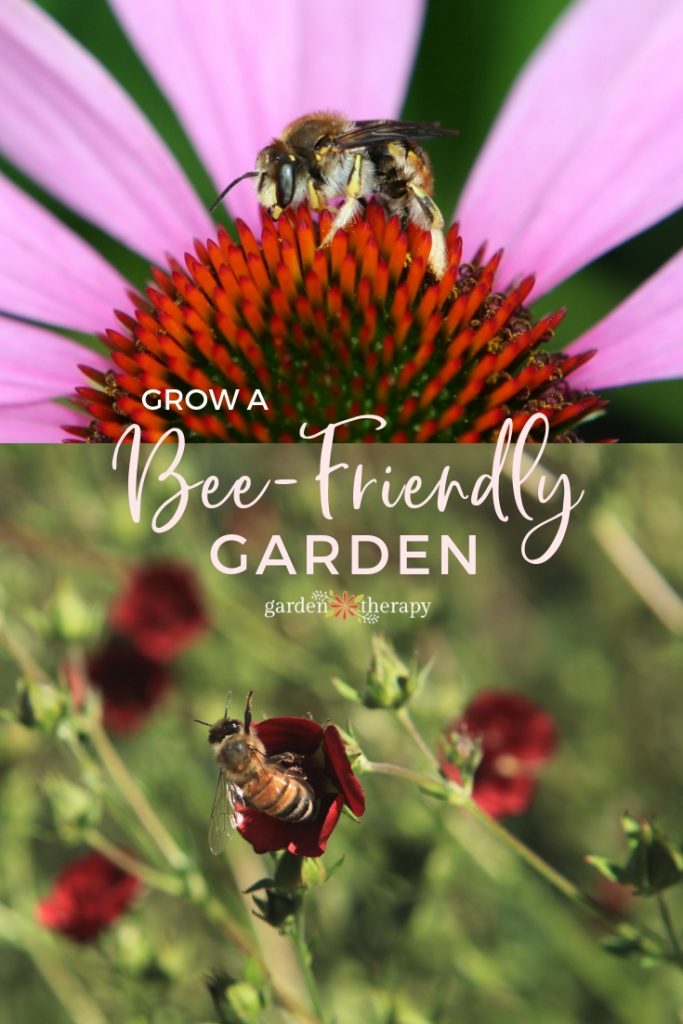
Do you have fruit trees that used to do well but are no longer producing much or any fruit? Perhaps your vegetable garden isn’t as lush as it once was, with fewer vegetables or smaller, misshapen ones. Before you dig out the fertilizer or give up altogether, call in the air force: bees.
Attracting bees to the garden is like hiring a workforce of full-time gardeners to help produce the strongest, most beautiful plants and healthiest vegetables.
These hardworking insects, along with other pollinators, are the smartest thing you can cultivate in your garden because they will do much of the work for you. Follow these simple steps to create your own bee-friendly garden and plant some flowers for the bees.
This post will cover…
Expert Tips for Creating a Bee Garden
- Look for native plants at your local garden centre and see which flowers the bees visit. Ask someone who works there what local flowers bees like best, or choose a bee wildflower seed mix.
- Plant a wide range of flowers in different colours, shapes, smells, and blooming times. Bees need a food source when they awaken in the spring until they hibernate for the winter.
- Beyond flowers, also create a bee bath which is a place for bees to get a drink of water safely.
- Also include bee houses for the solitary bees, a safe spot to nest and breed.
- Avoid the use of pesticides and herbicides in your garden, as these can affect beneficial insects like bees as much as the annoying ones.
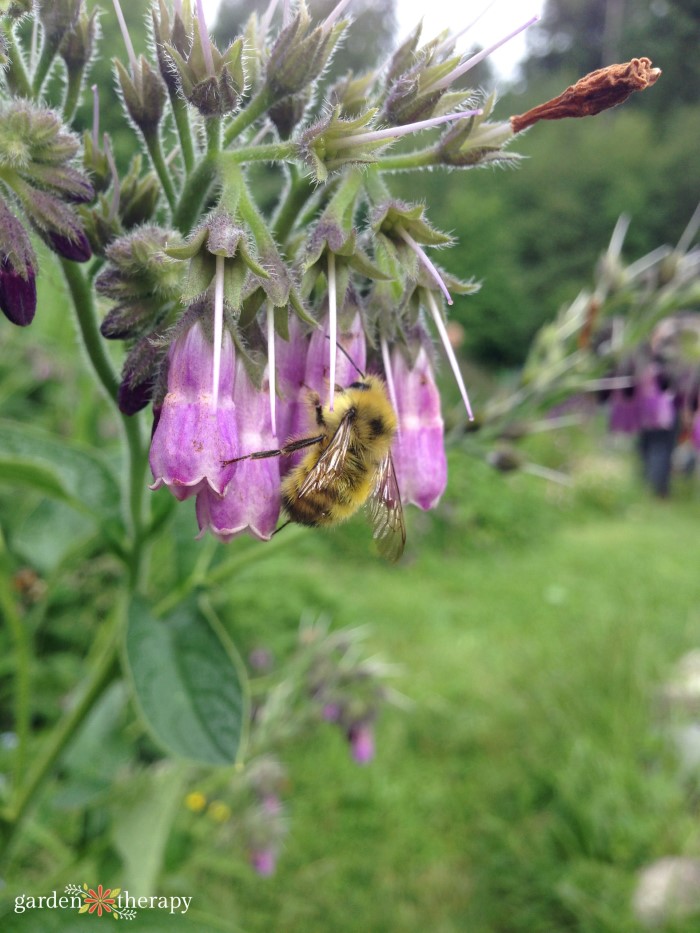
Why We Should Attract Bees to the Garden
Gardeners all know bees as pollinators, but very few of us realize how much we rely on them to get some of our basic fruits and vegetables. Out of the 100 major food crops in the USA, bees pollinate 70 of them.
We rely on bees to get strawberries, blueberries, apples, grapes, peaches, pumpkins, cucumbers, broccoli, onions, carrots, cashews, almonds, and so much more. Through pollination, bees carry the pollen grains from male to female plants to fertilize the plant and develop seeds. Without the bees, we wouldn’t have seeds for any of these plants!
Planting flowers for bees allows us to help the little insects flying around the neighbourhood and their mission to pollinate our plants. To really get ahead on how to help the bees, you can start by identifying the types of bees that visit your garden and their specific needs.
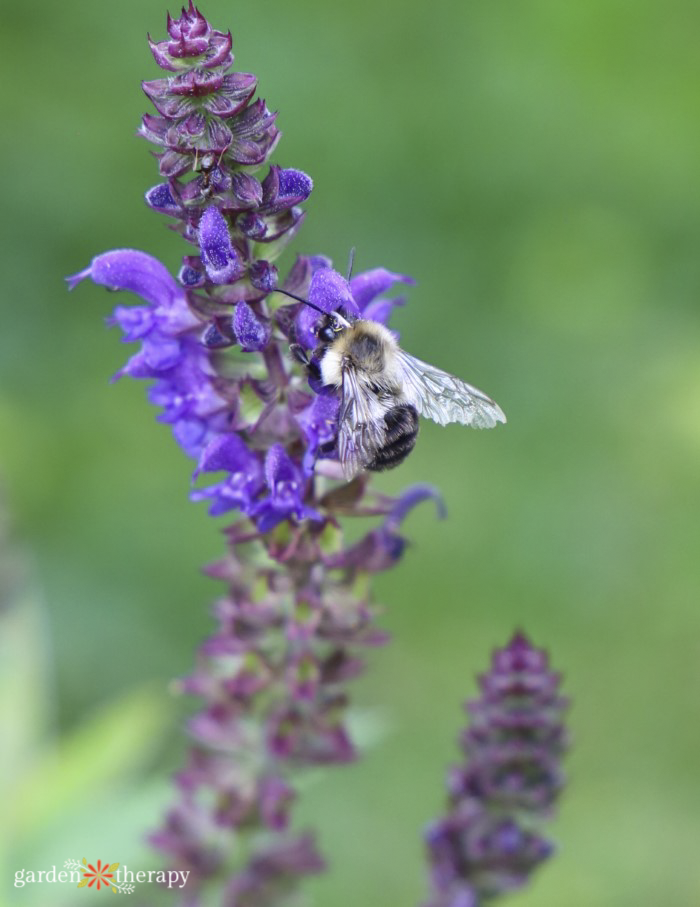
What Bee-Friendly Plants Should I Grow?
The first step is to choose flowers that attract bees and plant them in a sunny spot. There are so many varieties out there of flowering plants that bees love, and they differ between climates.
One way you can figure out what plants to choose for your garden is to visit a nursery and look for the bees. Observe which plants they are buzzing around at the garden center and bring a bunch of them home.
And here is another tip: it’s better to plant a number of the same plants than many different varieties, as bees are attracted to larger expanses of one kind of flower.
To quickly create an instant bee garden in your yard, purchase an annual bee wildflower seed mix and spread them around your garden. The seeds in bee mixes are chosen because bees love them and bloom in succession. Scatter the seeds in the perennial garden or in a few pots to set around the garden, and they will keep the bees happy all summer long.

The Best Flowers for Bees
These are a few tried and true flowers that bees love that can be easily found and planted across most zones. Make sure to select bee-friendly plants for every season so that bees can access food from early spring to late fall.
As general rules, bees like bright colours and sweet-smelling flowers. These flowers are doing their best to attract pollinators to their petals with their showiness.
Bees also like flowers where they can gather as much at once. Think about how much easier it is from a bee’s perspective to visit a lilac bush rather than hop around individual flowers.
Annual Flowers for Bees
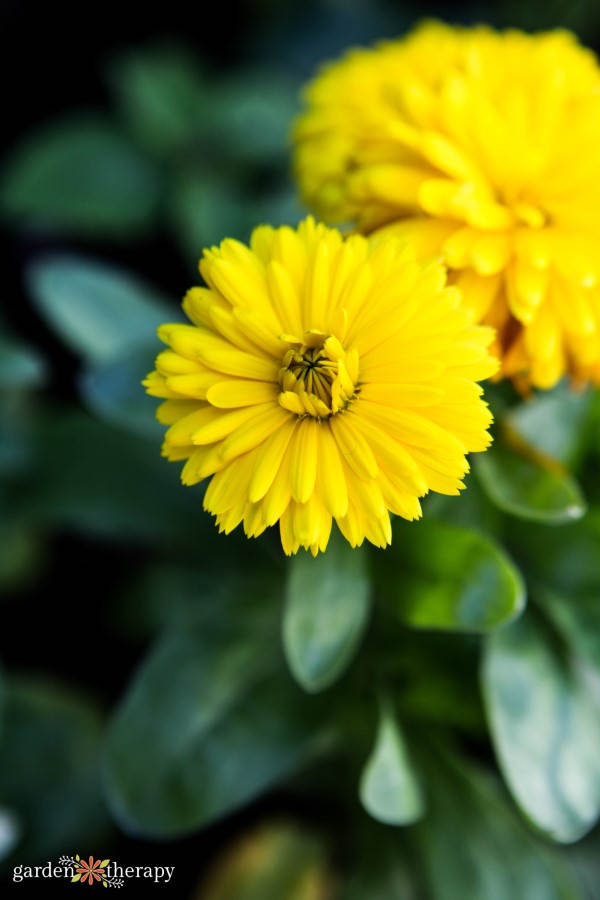
Perennials that Attract Bees
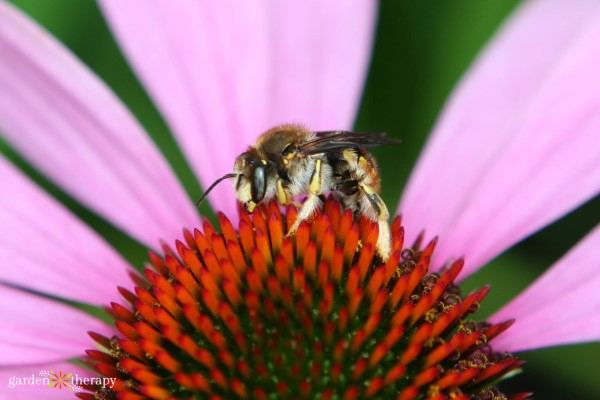
Bee-Friendly Herbs
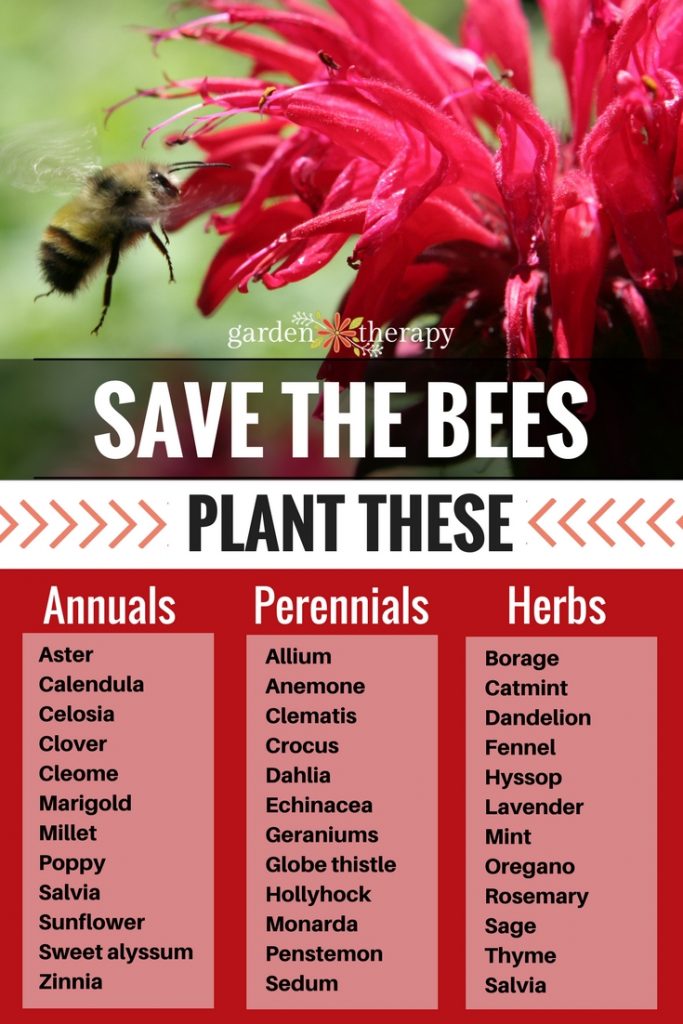
Make a Bee Bath
Creating a bee-friendly garden means more than just planting bee-friendly plants. You certainly want to attract them with gorgeous blooms, but you will want to give them a place to drink while they are in your garden. Making a simple bee water feeder that looks nice in the garden is easy.
Add rocks to a shallow dish or bowl so that they sit above clean water to give the bees a place to perch. If you have a problem with aphids, the water will attract beneficial insects, so place the dish near the plant with the aphid problem to help them wash down the feast!
See this post for detailed instructions on how to make a bee bath.
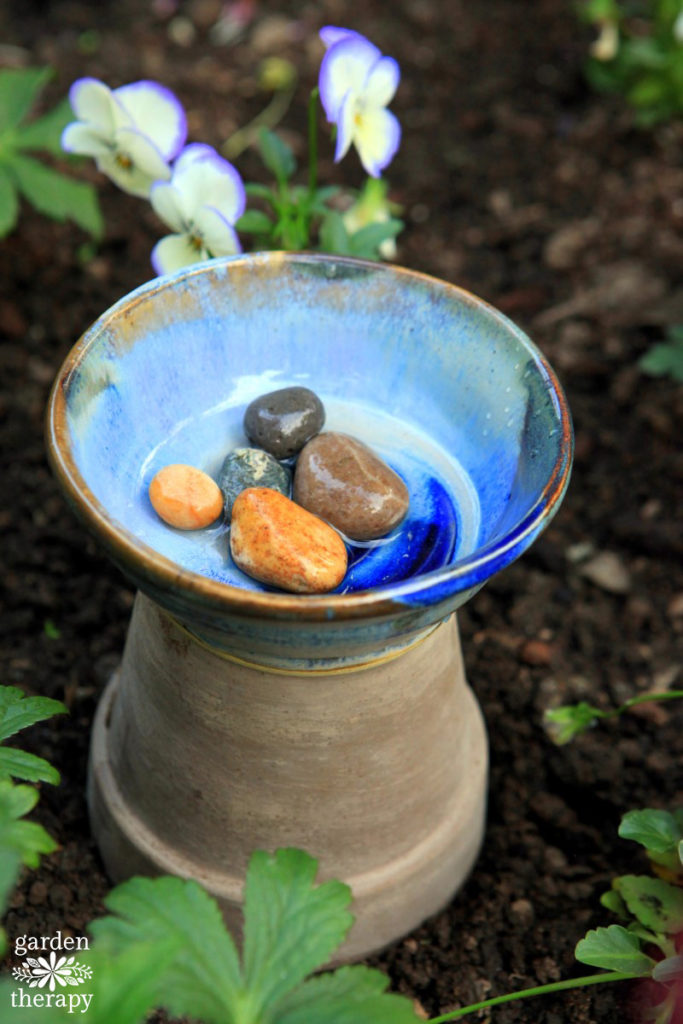
Make a Bee House
To attract beneficial wild bees to your garden, give them a place to nest and breed. A bug hotel is a place for solitary insects like solitary bees, solitary wasps, ladybugs, lacewings, and more to overwinter.
You won’t have to worry about it becoming a hornets’ nest, though, as the hornets, yellow jackets, and wasps that are usually a nuisance in the summer build their own hives somewhere near your house (here is a wasp trap that might help in that case).
A bug hotel is a place for wild, solitary, beneficial insects. You can make your own by filling a wood box with rolls of paper or hollow reeds, or buy one that looks as beautiful as it is functional. Read more about bug hotels here.
Also, be sure to do practices like no mow may and leave the leaves to help bees who shelter in your garden in the natural spaces.
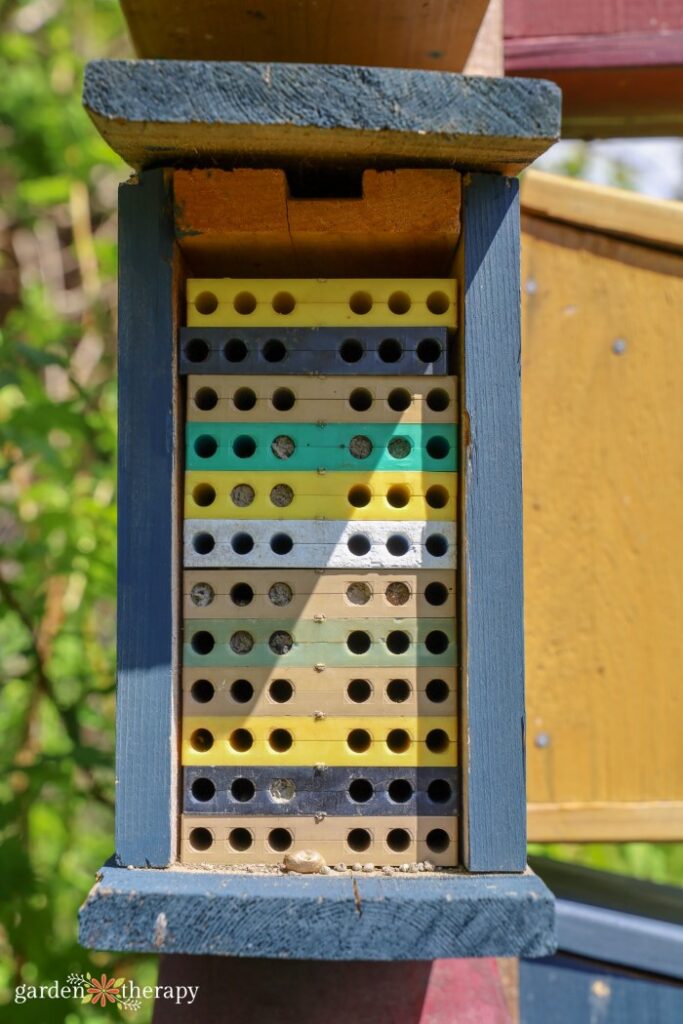
Don’t Sting Me!
Bees often get a bad reputation for being confused with wasps. Bees are gentle creatures that only sting to defend themselves from harm, such as being grabbed or trampled. Wasps can be a bit more aggressive, but unless you provoke them, they won’t start attacking you.
Bees and wasps don’t get angry; they simply defend themselves. Show them respect and care, and you should not get stung.
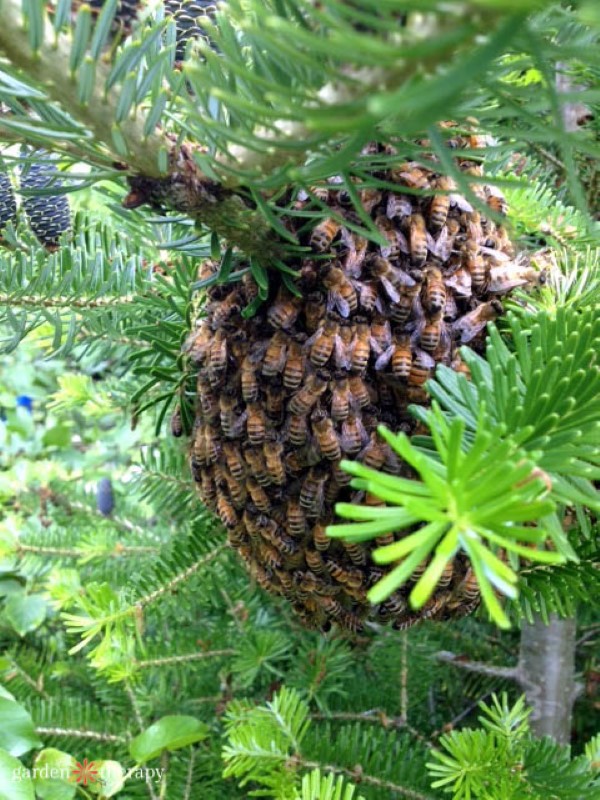
I saw this honeybee swarm at UBC Farm, and it was quite a sight to see! And hear. The buzzing was like music. And while this many bees might be frightening to some, these little workers are gentle creatures just looking for a new home.
Bees swarm when they outgrow the hive or there is something wrong with it. Usually, a thriving hive will get quite large and create a new queen. The new queen bee leaves the colony with a large group of worker bees.
If you see a swarm like this in your garden, get in touch with your local beekeeping association. They will have the resources to help find these bees a home.
Be Careful Where You Dig
If you have ever woken up a sleepy bumblebee in your garden, you know that many of them bury themselves in the ground for the winter. Believe it or not, most bees are ground bees—over 70% of all species of bees nest underground in conical-shaped mounds in the soil.
In the spring, they wake up, groggily fly around, and start pollinating the early fruit crops. So, if you want fruit in the summer, then roll out the red carpet for the ground bees (and watch where you dig).

Avoid Pesticides, Protect the Bees
It goes without saying that an organic garden is better for bees. Using pesticides in your garden will only continue to hurt the bee population and kill the pollinators that will help you grow healthy, strong plants. If you would like some pesticide-free pest control ideas, try this natural pest control spray or opt for companion planting.
Frequently Asked Questions About Bee Gardens
Bumblebees do sting, though they will only do so when provoked. If you see a bee nearby, it buzzes past you, or it is visiting a nearby flower, then you’re completely safe.
The only way bees will sting you is if they feel threatened. Avoid touching the bees, their hive, or waving your arms by them.
Mostly, they are just happy to bumble alongside you in the garden.
Call your local beekeeping society or wildlife non-profit if you find a hive in your yard and would like to relocate it. They will safely remove the hive and get it a new home.
It’s important to have flowers from early spring through to late fall as this will provide food for the bees. Early-season flowers include lilacs, lungwort, peony, ajuga, bellflower, alliums, and honeysuckle.
In the summer, you can plant Agastache, borage, bergamot, calendula, cornflowers, foxglove, sunflowers, and dahlias. Late-season flowers include echinacea, mums, asters, goldenrod, bee balm, and sedum.
Bees and butterflies will land on just about anything they can get their hands on. For butterflies, you also want to plant their host plants for the caterpillars. For instance, monarchs need milkweed. Some favourite flowers include hollyhock, phlox, lavender, false indigo, daylilies, catmint, butterfly bush, and black-eyed Susan.
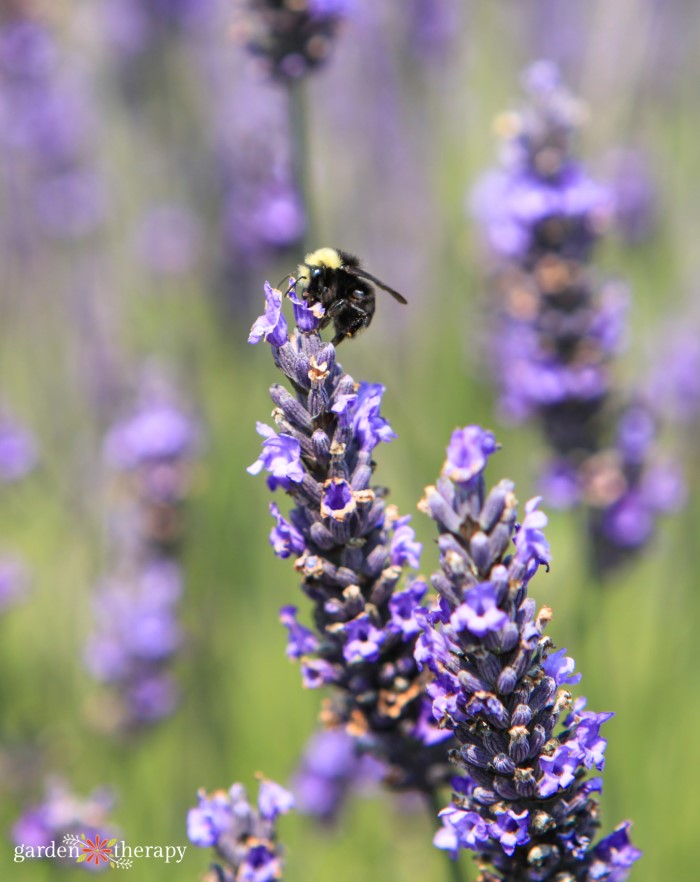
Since bees don’t see colour the same way that we do, they have preferred favourites. They like blue, violet, orange, and yellow colours the most since they are easy to see. Anything that is red or dark coloured will look black to a bee, so the bees won’t feel inclined to visit those coloured flowers.
Bees are just like us, requiring proteins, carbohydrates, fats, minerals, vitamins, and water to live. And like our food, different pollen and nectar will have varying nutritional value. It’s also why they will visit certain flowers and buzz past others. Bees will instinctively seek out the best food for them, opting for lower-quality food if nothing else is available.
Bees also need flowers they can actually access nectar and pollen from. For instance, bees with short tongues will have difficulty with flowers with deep centers.
Unlike other pollinators like butterflies or hummingbirds, bees do not like tubular flowers. For them, the shape isn’t easy to access and, therefore, not great for pollination. Instead, they prefer open flowers.
As mentioned above, they also don’t particularly like red or dark coloured flowers since they appear black to their vision.
Sometimes, you’ll see bees on flowers that may not be their favourite. For instance, a bee will eat dandelions, but it’s not their first choice. For a bee’s diet, a dandelion is junk food, so it’s not the best food source. However, any food source is better than no food source.
Bees are also known not to like stinky flowers, much like other bugs, such as marigolds, geraniums, and citronella. These flowers also produce little pollen, so they’re not a beneficial stop for the bees.
Many fruit and vegetable plants require pollinators to grow or rely on pollinators for better production. This includes eggplants, pumpkins, gourds, cucumbers, hot peppers, watermelons, tomatoes, strawberries, blueberries, runner and broad beans, peas, and more.
